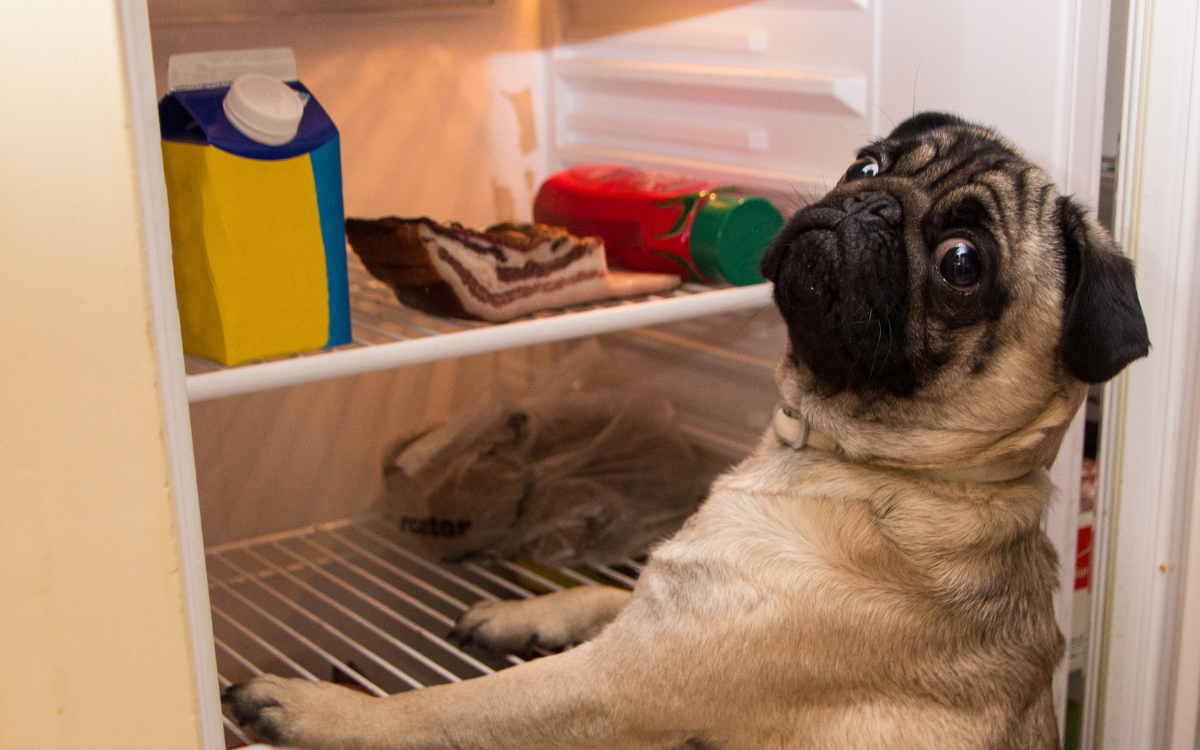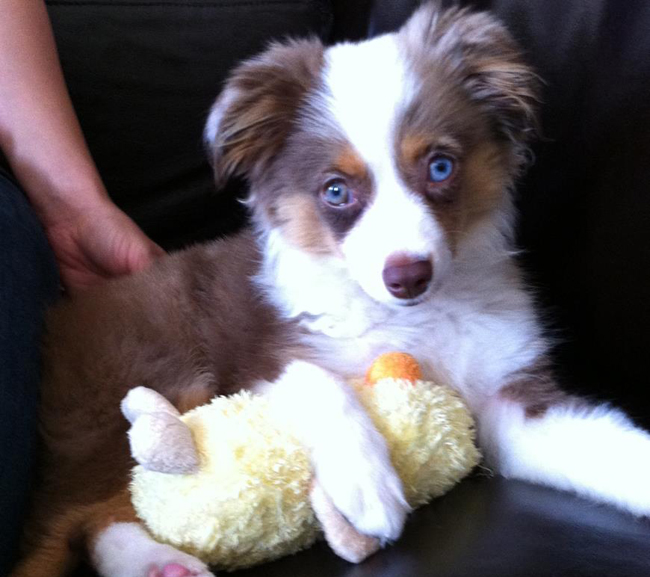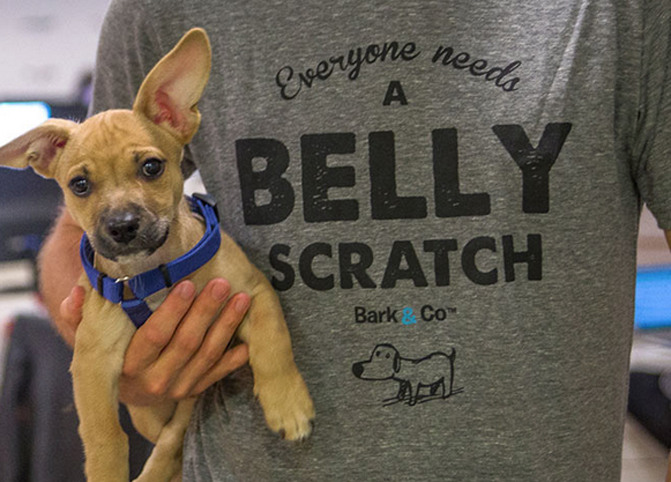For Pups With Short Attention Spans…
Dachshunds are particularly predisposed to slipping a disc, which is not only extremely painful, but can be affect your dog’s nervous system, ability to walk, and control of other bodily functions. It is critical to get immediate veterinary care if you suspect your Dachshund has slipped a disc, as surgery is usually the best option for recovery. Prevention can be difficult, as many factors are out of an owners control, but weight management and steady exercise are important components of a healthy Dachshund life.
Dachshunds are spunky, spirited, and larger than life. Their small stature and long bodies make their exuberant expressions all the more heart-warming. But unfortunately, these little life-of-any-party critters are also predisposed to back disease.
And not just any run-of-the-mill back pain: we’re talking Intervertebral Disc Disease, or IVDD (you’ll sometimes hear it referred to as “slipped” or “herniated” discs).
While genetic research for this condition is promising, we don’t yet have a genetic test that is a good indicator of which pups will develop a bad back. Most often, IVDD will present suddenly, with your dog unable to walk with their back legs. Occasionally, the condition is caught earlier, when it presents as severe back pain.
Let’s dive into everything we know about Dachshund IVDD, how it presents, and how it can be treated!


What is an Intervertebral Disc, and What Does it Do?
An intervertebral disc is the structure that acts as a cushion between each bone in the spinal column (these bones are the vertebrae). Each disc is composed of a stiff outer layer and a gelatinous inner layer, similar to a jelly donut.
These discs keep the vertebrae from coming too close together or stretching too far apart, while still allowing bending and twisting. They also hold space between each vertebra, allowing nerves to run in and out of the spinal column without being pinched.
It’s a difficult task, but when everything works correctly, these little discs keep dogs held together while still allowing them a full range of motion. Unfortunately, there’s no shortage of ways the vertebrae can have things go wrong.
What Happens When the Disc “Slips?”
There are a few different types of IVDD. In Dachshunds, and all other chondrodysplastic (short-legged) dogs, Hansen Type 1 disc disease is the most likely. This occurs when the composition of the gelatinous inner layer of the disc changes, causing it to calcify. This then results in the stiff outer layer rupturing when forces (i.e. your dog moving about) are applied1-2.
That’s a lot of technical jargon, so imagine the jelly donut from our analogy above had gravel added to its jelly instead of fruit. Besides being pretty unappetizing, you can easily imagine how a gravel-filled donut would be more likely to burst than a normal jelly-filled donut.
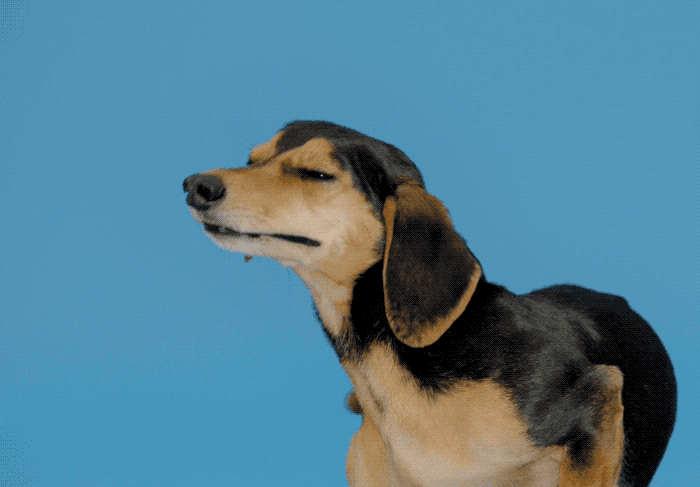

What’s worse, when this calcified material escapes, in heads in the path of least resistance. Often, that’s into the spinal column, where it smushes the spinal cord. NOT good!
The spinal cord, just like the brain, does not tolerate trauma well. When this calcified material damages the spinal cord, it can have profound effects on your dog’s nervous system and control of their body.
What kind of effects? Well, that depends on which disc “slips.” The regions controlled by the spinal cord above a slipped disc typically remain normal. However, the regions controlled by the spinal cord at the site of the damage and below will not function normally.
Where Can Discs “Slip?”
The most common sites of herniation are the base of the neck, just after the rib cage, and just before the pelvis. Dachshunds tend to have the latter two sites of herniation more commonly.
While it’s possible to herniate any disc in the spinal column, the intervertebral discs at the chest are less likely to rupture into the spinal cord. This is because there is a ligament that connects the ribs from one side to the other.
This ligament runs between the intervertebral disc and the spinal cord, effectively acting as Spanx for the intervertebral disc. Sure, it’s possible to herniate in that direction, but as anyone who has tried to peel themselves out of Spanx can tell you, it requires a great deal more effort!
What are the Symptoms of a “Slipped” Disc?
In Dachshunds, IVDD causes a sudden onset of severe back pain and lack of use of hind limbs. Your Dachshund may be going about their evening, cry out, and you find them dragging their back legs. They may still have some movement of their hind limbs, but be unable to control it. Sometimes they can even take a couple of ginger and uncoordinated steps on their back limbs. This is very painful and they would likely be crying out in pain with even the slightest movement.
Most often, though, the hind limbs are limp behind them. In rare cases, they may also have stiff rigid front legs that they cannot use.


What Should I Do if My Dachshund Has a “Slipped” Disc?
Your Dachshund will need veterinary attention ASAP! This is a situation where the emergency vet is necessary if your regular veterinarian cannot accommodate you immediately. Your pet’s future ability to move may depend on it.
Be careful when trying to help them: even the sweetest, gentlest dog may bite in severe pain. They’re not being bad, they have no other way to protect themself.
Gently move them to a stable, padded surface that you can easily move into and out of your car without jostling them much. A box with a towel in the bottom is great. If you have a plastic kennel that you can disassemble so it is only the bottom, that will work too. Even a large plastic storage bin. Avoid carriers that require you to push/pull to get them in and out. Those types of carriers are best for animals that can walk on their own.
FYI, pups with “slipped” discs often lose the ability to hold urine and feces, so some absorbance to what you place under them is helpful.
What are the Treatment Options for Slipped Discs?
There are two main treatment options for Intervertebral Disc Disease. Outcomes vary based on how severe the damage is, and how quickly they receive medical care.
In most cases, surgery is the best chance your pet has at recovery from a slipped disc. For surgery to have the best results, it typically needs to occur within the first 24 hours. This is critical, since most of these dogs cannot walk on their back legs or control their bladder and bowels. These functions are essential to their quality of life. And while surgery is often the best chance at return of function and best recovery, it is by no means a guarantee.
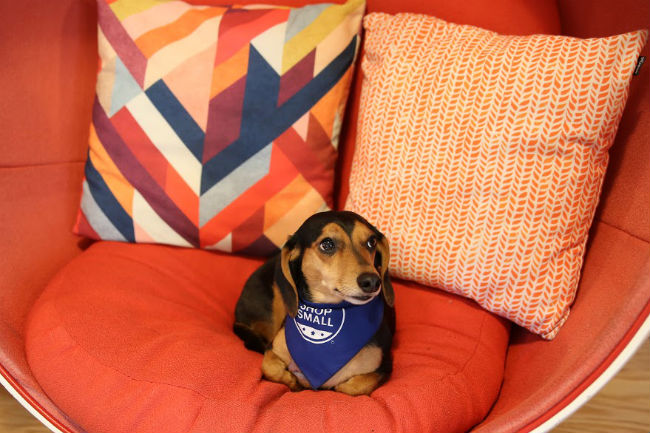

Medical management is sometimes an option, but is typically reserved for less severe cases or cases where surgery is not possible. Regaining lost functions is far less likely with medical management, and you must follow the at-home care exactly for this to be successful. So if your vet is instructing cage rest, they mean it. You cannot risk that your pet moves suddenly because you take your eyes off them for one minute while you answer the phone, move the laundry over, brush your teeth, etc. I know this seems harsh, but is essential for medical management to help your pet stabilize.
I Love My Weenie! What Can I Do to Prevent This?
Keep them fit and active. Increased weight and/or decreased muscle mass, especially in looooong body types like Dachshunds, put increased stress on a dog’s back as they move around. Work on keeping your dog in an ideal body condition. If you do not know how to monitor for this, ask your veterinarian what to watch for.
Also, get your pet good, consistent exercise for an hour or more a day. This can be taking them for a walk, playing fetch, or even PT exercises you can guide them through. If you are interested in PT exercises, ask your veterinarian for a referral to a rehabilitation specialist. After an assessment, they will be able to teach you and your dog how to keep their body in tip top shape.
Outside of keeping them healthy and fit to minimize the amount of stress on your Dachshund’s back, there is not much you have control over. If you want to know how your dog’s back is doing, you can consider medical imaging to determine if calcification is happening in the discs of your dog’s back. If calcification is noticed, your pup is at increased risk of herniation because their gelatinous filling has turned to gravel. Be warned though, even if no calcification is seen, your pet could still slip a disc.
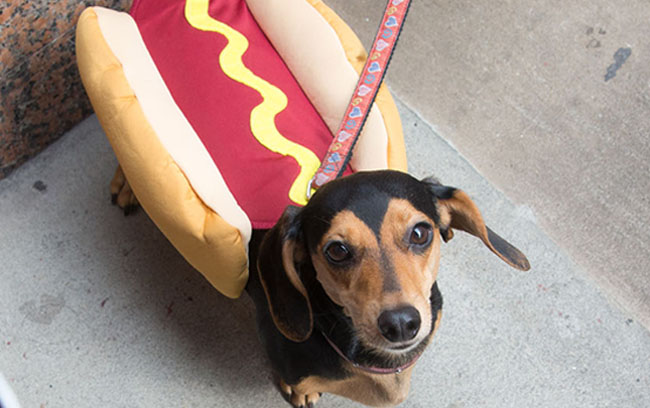

Undoubtedly, this is not the future any owner wishes for their beloved pet. If you have a Dachshund (or other at-risk breed), being informed and having a plan for if this occurs is helpful. As a heads-up, surgical treatment is very expensive. If you could imagine wanting to pursue back surgery if your doggo lands in this position, make a plan for how you will afford this. You will have plenty of stress on your plate: the last thing you will need is financial stress. Fingers crossed it never comes to that.
Colleen Ferriman, DVM, is a canine and feline health, wellness, and illness management advocate. She has a combined 10 years of experience in clinical medicine, education, and educational content development. Colleen graduated from Colorado State University as a Doctor of Veterinary Medicine, has worked as a general practitioner, and has contributed to the development of veterinary educational tools. She is also a member of the American Veterinary Medical Association and American Academy of Veterinary Pharmacology and Therapeutics.
Sources
1 LeCouteur R.A.: Intervertebral Disc Disease. Veterinary Neurology Symposium 2011. https://www.vin.com/doc/?id=4803897
2 Béraud R.: Intervertebral Disc Disease (IVDD) or Why I love Dachshunds: Part I. 66th Convention of the Canadian Veterinary Medical Association, 2014. https://www.vin.com/doc/?id=6307844



